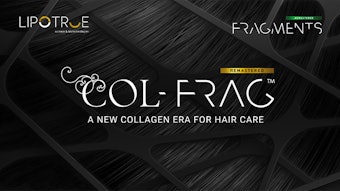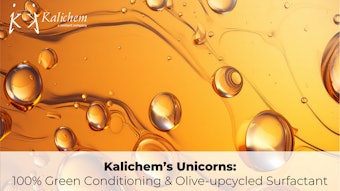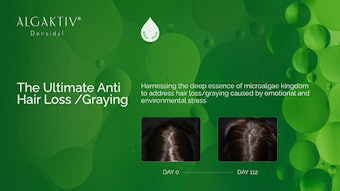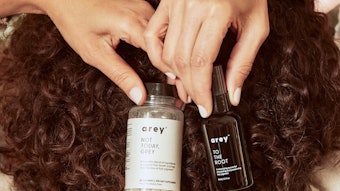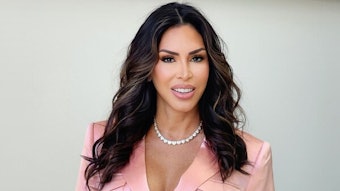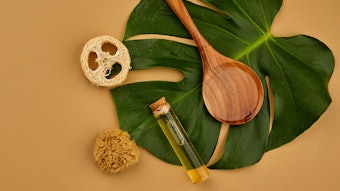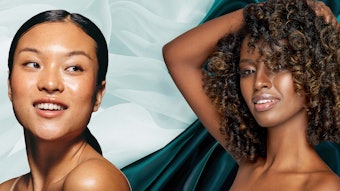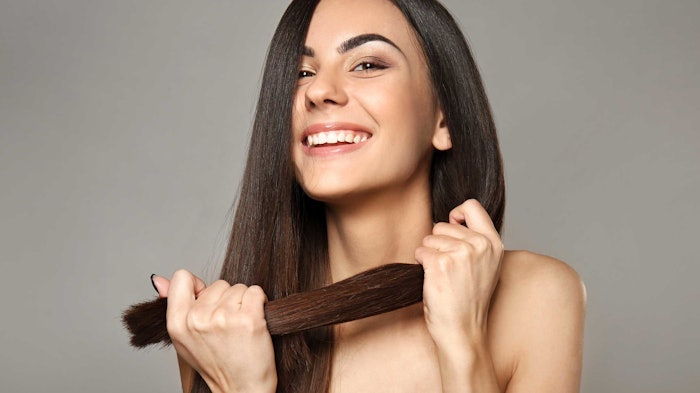
Damage control is a major objective for today's hair care consumers. This is evident from Data Bridge Market Research projections for the hair bond builder or "multiplier" market, which is expected to expand at a CAGR of 7.80% from 2021 to 2028. The source attributes this in part to the increased use of damaging treatments such hair straightening, perming and weaving. In relation, Fortune Business Insights (FBI) cites hair coloring as a growing trend.
Log in to view the full article
Damage control is a major objective for today's hair care consumers. This is evident from Data Bridge Market Research projections for the hair bond builder or "multiplier" market, which is expected to expand at a CAGR of 7.80% from 2021 to 2028. The source attributes this in part to the increased use of damaging treatments such hair straightening, perming and weaving. In relation, Fortune Business Insights (FBI) cites hair coloring as a growing trend.
See archived: How Damaged is Hair? Part II, Internal Damage
A 2021 survey by Dyson discovered that of some 23,000 survey respondents across 23 markets, 70% believed they have damaged hair; conversely, healthy hair was described as shiny (36%), smooth (29%) and linked to a healthy scalp (26%). Clearly, the end game for product developers is to invent ways to reinstate these "healthy hair" cues.
Enter: bond builders, which aim to penetrate hair and reconstruct it. According to Cornwell and Marsh, there is not yet an agreed upon scientific definition of a bond builder for hair, so they proposed one:
- A formulation component that is able to penetrate into the hair and improve or restore the internal structure of hair, giving rise to an improvement in hair mechanical properties.
Per this definition, the three main bond builder types include: organic acids and related actives, proteins and peptides and lipids — and the market's been all abuzz with these miracle workers. (For more on these types, see below).
See related: How Bond Builders 'Repair' Hair
Hair Bonding Buzz
Last month, for example, Unilever's Dove brand launched what it refers to as "its most scientifically advanced hair care collection on the market." The Dove "Bond Strength" line is designed to reverse up to three years of accumulated hair damage. It includes four products: the Dove 10-in-1 Bond Strength Serum Mask, Shield Super Serum and Shampoo and Conditioner. The products feature the brand's proprietary Bio-Protein Care and peptides.
A few months prior, P&G launched the Pantene conditioning treatment collection "Miracle Rescue with Melting Pro-V Pearls" and the "Pro-V Miracles" line of three shampoo and conditioner sets, "recognizing that 80% of women struggle with hair damage and perceive effective hair repair as expensive." The Pro-V Pearls collection is said to repair six months of damage and features an intensive bond repair mask based on concentrated pearls that upon use, melt and release "millions of replenishing nutrients that can penetrate deep into the hair strands and build new bonds within damaged hair."
Of course, these are just two of the numerous market offerings. Glamour magazine recently highlighted its picks for the "12 best bond builders to help repair your hair from the inside." These included:
- Olaplex No. 3 Hair Perfector
- K18 Leave-in Molecular Repair Mask
- Pantene Pro-V Molecular Bond Repair
- Living Proof Triple Bond Complex
- Bumble and Bumble Bond-building Repair Treatment
- Redken Acidic Bonding Concentrate Intensive Pre-treatment
- Coco & Eve Bond Building Hair Treatment
- Amika The Kure Multi-task Repair Treatment
- The Inkey List PCA Bond Repair Hair Treatment
- Philip Kingsley Bond Builder Restructuring Treatment
- L'Oréal Paris Elvive Bond Repair 3 Step Routine Bundle for Damaged Hair
- Color WoW Dream Cocktail
What makes products like these such a hot commodity? It goes back to hair health.
Continued Quest for Hair Health
"Hair bonding treatments are highly popular due to their ability to significantly improve hair health by repairing damage from within, which addresses the rising consumer awareness of hair damage from styling and chemical processes," explains Beth Labrecque, Senior Scientist for Dove Hair. She adds that while many damage-focused products treat the surface of hair, giving it a healthier appearance, bonding products address issues from the inside.
"I think damage has always been a hot topic for consumers," adds Jennifer Marsh, Ph.D., research fellow for P&G. "There is fundamental trade-off between achieving the style women want (use of color, heat, etc.) but this can bring damage such as frizz, split ends, flyaway, etc."
She added that right now, there is a strong trend for long hair. "We have recent data showing among 1,000 women in the U.S., ages 18-55, 79% describe their hair shoulder length or more. We also showed in hair harvesting studies that high damage levels come with longer lengths (even if lower coloring frequency)."
Behind Bond Builders: 3 Main Types
In terms of the recent Dove and Pro-V launches, the experts shared what makes them tick (or at least, as much as they could share). "Dove Bond Strength works wonders because it's fueled by Dove's breakthrough technology, Bio-Protein Care and peptide," writes Labrecque. "Designed to work in harmony with the natural biology of hair, the new protein formula works beneath the cuticle, within the hair shaft.
"The Dove Bond Strength 10-in-1 Serum Mask features this technology and delivers 10 transformative benefits including frizz reduction, shine and manageability. With this patented technology, Dove Bond Strength is not just fixing the surface; it’s strengthening those molecular bonds from within where the structure is damaged, to nourish your hair for strong, shiny, smooth strands."
Regarding the Pantene Miracle Rescue Deep Repair Conditioner with Pro-V Pearls, Marsh commented: "We showed, over the last few years, the importance of lipids in hair breakage (especially in fatigue) and how the natural lipids in hair are lost over time.
"These lipids play a unique role in hair strength and can be replenished by lipids from hair products to re-build the CMC via hydrophobic bonds," she continued. "The Pro-V pearls are concentrated lipids that are concentrated hydrophobic bond-builders."
Recall that lipids were among Cornwell's and Marsh's three main types of bond builders; i.e., organic and related acids, proteins and peptides, and lipids. Following are some examples of these, with a high-level view of how they work.
- Organic acids and related actives: Examples include malic acid, maleic acid, succinic acid, citric acid, calcium lactate, hydroxypropyl gluconamide and glycine-betaine (from sugar beet molasses). These are the most widely investigated bond builders and generally interact with water content in hair for various effects.
- Proteins and peptides: Low molecular weight proteins and peptides not only penetrate hair, but also affect water absorption and have been shown to induce changes to tensile properties. Higher molecular weight proteins are less able to penetrate and are delivered mostly to the hair surface but when applied to relaxer damaged textured hair, they can reduce premature fractures.
- Lipids: For lipids such as fatty acids and fatty alcohols, the strongest interaction is via hydrophobic interactions with lipids found in the medulla in the CMC. Penetration of these materials has been quantified. Evidence of strong hydrophobic interactions with fatty alcohols penetrated into hair show increased fatigue strength.
Conclusion
Whatever the mechanisms at work, it's clear that this market is on the upswing and that consumers have bonded with hair bonding agents.
